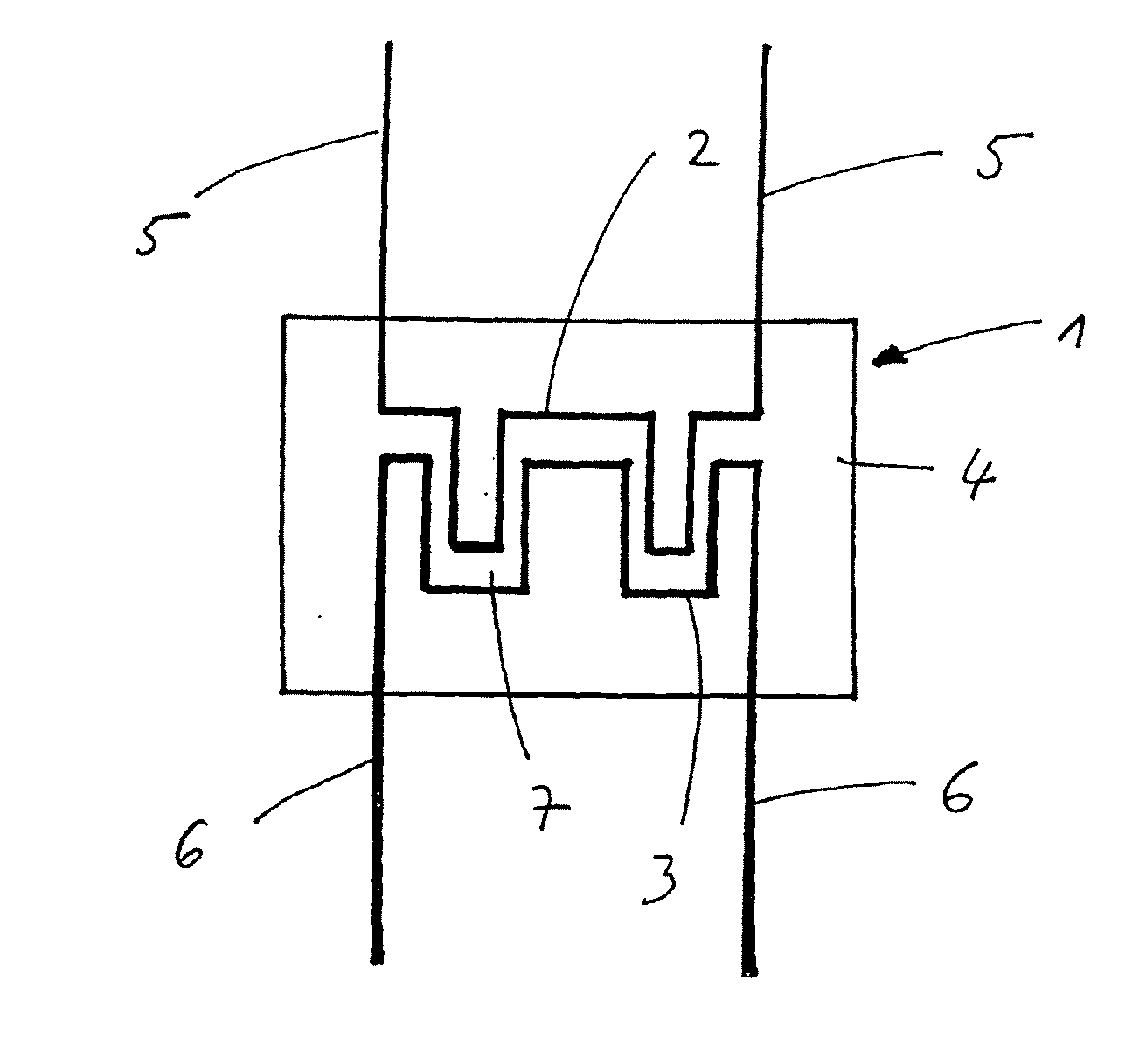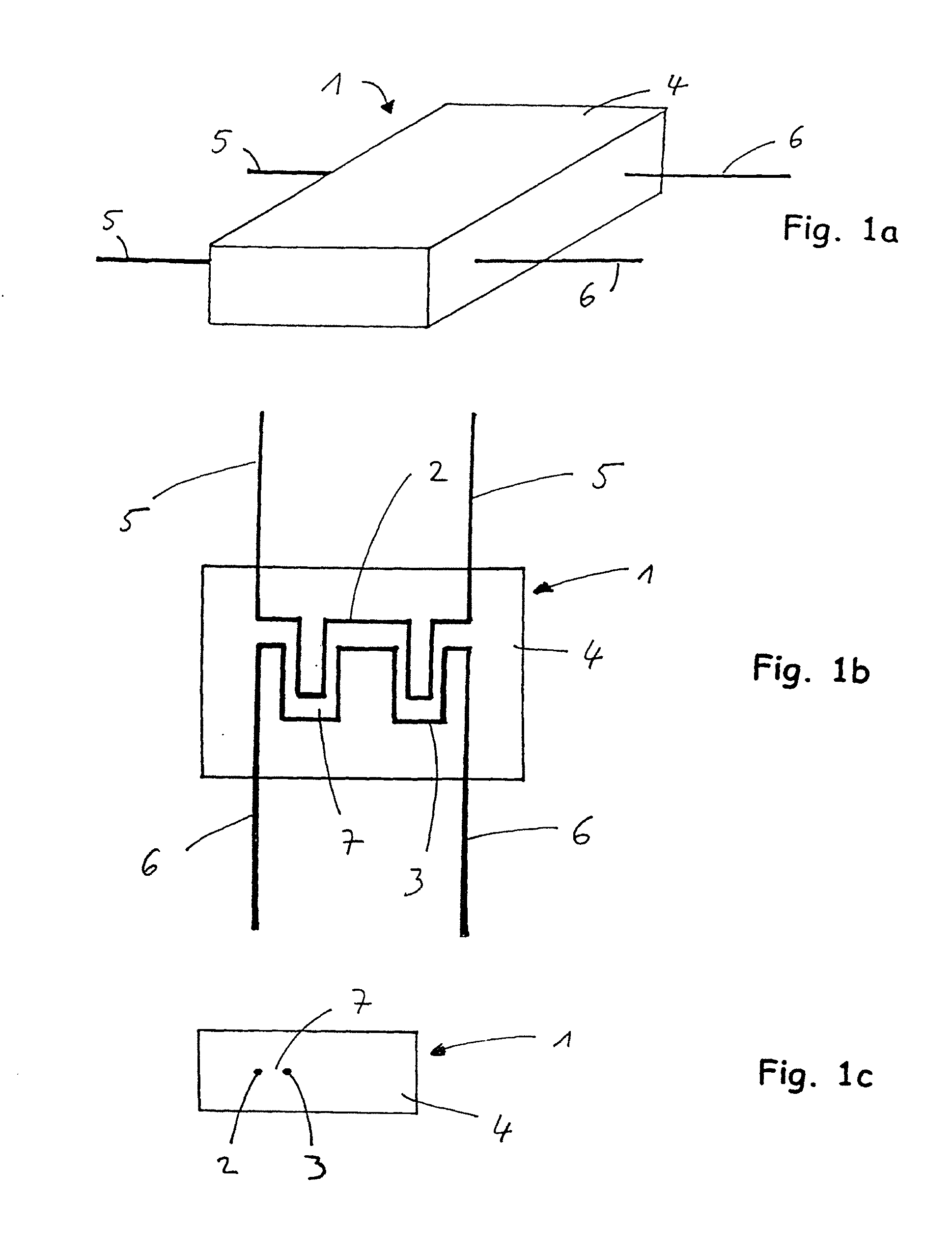Heatable gas sensor and method for the production thereof
a gas sensor and heat sink technology, applied in the direction of gas analyzer construction details, instruments, electrical equipment, etc., can solve the problems of complex and expensive production, insufficient sensitivity of the sensor, and limited use of the entire gas sensor, etc., and achieve the effect of being especially simple to produ
- Summary
- Abstract
- Description
- Claims
- Application Information
AI Technical Summary
Benefits of technology
Problems solved by technology
Method used
Image
Examples
Embodiment Construction
[0016]This object is achieved by a heatable gas sensor and a method of manufacturing same having the features of claim 1 and / or 6.
[0017]Accordingly, a heatable gas sensor for gases which contain reducing substances such as methane, ethane, propane, carbon monoxide, hydrogen and / or the like, with a gas-sensitive porous metal oxide and electrical elements spaced a distance apart from one another, is created for heating the metal oxide and for measuring the conductivity of the metal oxide, in which the elements are each embedded in sintered metal oxide.
[0018]The gas sensor according to the invention is thus free of a substrate, and the sintered metal oxide surrounds the electrical elements on all sides.
[0019]Therefore, this first yields an increased sensitivity because the conductivity is measured in a three-dimensional spatial area along and between the electrical elements, such that this area offers a much larger internal surface of the porous metal oxide, in comparison with the know...
PUM
| Property | Measurement | Unit |
|---|---|---|
| temperatures | aaaaa | aaaaa |
| temperatures | aaaaa | aaaaa |
| temperature | aaaaa | aaaaa |
Abstract
Description
Claims
Application Information
 Login to View More
Login to View More - R&D
- Intellectual Property
- Life Sciences
- Materials
- Tech Scout
- Unparalleled Data Quality
- Higher Quality Content
- 60% Fewer Hallucinations
Browse by: Latest US Patents, China's latest patents, Technical Efficacy Thesaurus, Application Domain, Technology Topic, Popular Technical Reports.
© 2025 PatSnap. All rights reserved.Legal|Privacy policy|Modern Slavery Act Transparency Statement|Sitemap|About US| Contact US: help@patsnap.com



